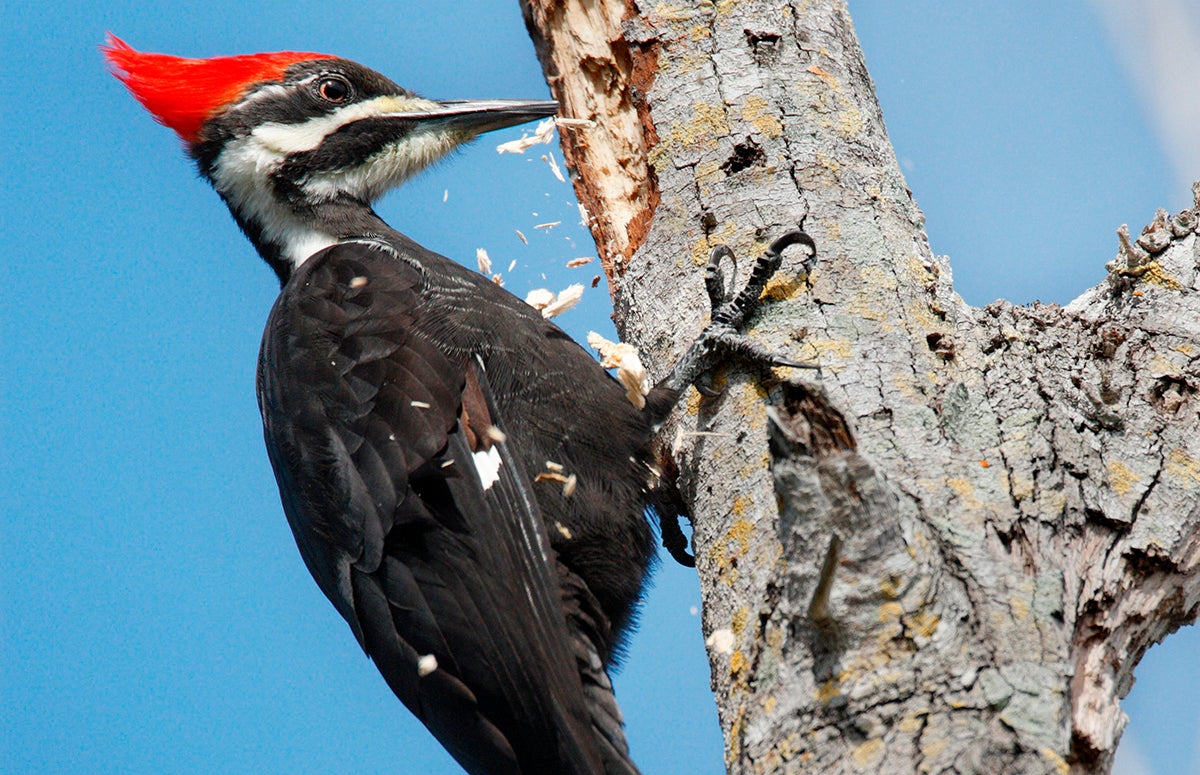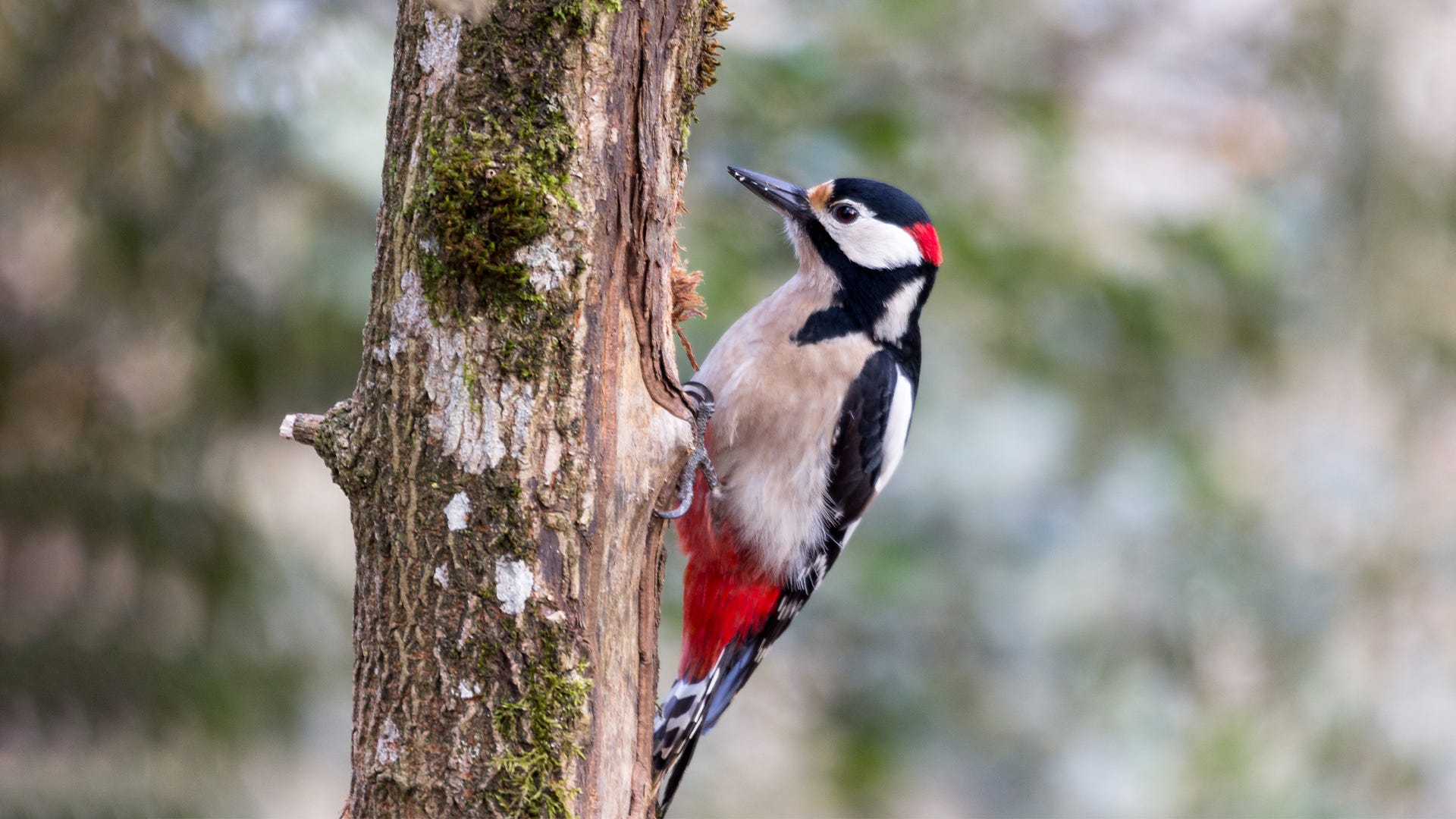Woodpeckers Unleashed: Exploring the Wonders of These Knowledgeable Tree Mountain Climbers
Woodpeckers, with their distinct markings and rhythmic drumming echoing via wooded areas, hold an unique location in the bird globe. Their specialized anatomy and adaptations enable them to navigate vertical surfaces with unparalleled ability. However, their mastery of tree climbing is just one facet of their fascinating behavior. As we dive into the complex information of woodpeckers' nesting habits, feeding techniques, and the recurring conservation efforts to safeguard these remarkable birds, a much deeper admiration for their location in nature unravels.
Composition and Adaptations
When taking a look at the anatomy and adjustments of woodpeckers, one can observe remarkable features that enable these birds to prosper in their specialized eco-friendly particular niche. Woodpeckers are furnished with a collection of unique physiological qualities that assist them in their woodpecking actions. One of one of the most prominent features is their strong, chisel-like beak, which is specialized for boring into timber to discover pests or create nesting cavities. This beak is sustained by solid neck muscle mass and a very developed head framework that serves as a shock absorber, permitting woodpeckers to consistently peck at trees without causing brain injury. Furthermore, woodpeckers have zygodactyl feet, with two toes dealing with onward and two dealing with in reverse, supplying a company hold on tree trunks while they look for food or drum for interaction.
Moreover, woodpeckers have a special tongue structure that is long, barbed, and sticky, enabling them to remove pests from holes in wood. This specific adaptation enables woodpeckers to manipulate a food resource that is unattainable to numerous various other bird varieties. In general, the makeup and adaptations of woodpeckers display the exceptional evolutionary remedies that have permitted these birds to thrive in their arboreal habitat.
Drumming Behavior
Having explored the anatomy and adjustments of woodpeckers, the focus currently changes to understanding their drumming behavior, an unique element of their communication and territorial display screens. Drumming is an important type of interaction among woodpeckers, offering several functions such as developing regions, bring in mates, and signaling alarm system. Each woodpecker types has an unique drumming pattern that assists individuals acknowledge members of their very own species and differentiate them from competitors or killers.
Woodpeckers produce drumming audios by quickly pecking on powerful surfaces such as dead trees, utility posts, or perhaps metal things, creating a collection of rhythmic beats. The strength and rate of drumming can vary based upon the purpose; for instance, a fast drumming sequence may symbolize aggressiveness in the direction of trespassers, while a slower and softer drumming pattern could indicate courtship (Woodpeckers in Florida). Additionally, woodpeckers may change the frequency and period of their drumming to share details messages properly
Nesting Behaviors
Discovering the nesting routines of woodpeckers exposes fascinating understandings right into their reproductive habits and habitat selections. Woodpeckers are known for their distinct nesting choices, usually digging deep into cavities in trees to produce protected areas for raising their young. These dental caries serve not only as a nesting site but additionally as a safe sanctuary from top article predators and harsh weather.
Woodpeckers display a high degree of fidelity to their nesting websites, frequently returning to the same area time after time. This actions highlights the relevance of ideal environment accessibility for their reproductive success. The selection of a nesting site is crucial for woodpeckers, with elements such as tree varieties, height, and degeneration phase playing considerable functions in their decision-making procedure.
Interestingly, some woodpecker varieties are understood to excavate several dental caries within their region, providing themselves with alternate nesting options. This technique may function as a form of insurance versus possible dangers or disruptions to their main nesting site.

Feeding Strategies
Woodpeckers employ a selection of specialized feeding techniques to obtain their key food sources. One of one of the most distinctive feeding habits of woodpeckers is drumming, which entails rapid pecking on trees to discover pests beneath the bark. This drumming not only assists them situate prey however likewise acts as a means of communication with various other woodpeckers. Woodpeckers have solid, chisel-like beaks that allow them to drill into timber easily. Once a hole is produced, they utilize their lengthy, barbed tongues to extract insects such as ants, beetles, larvae, and crawlers. These tongues are covered with sticky saliva that helps trap the target. Woodpeckers are additionally known to excavate dental caries in trees to access covert insect larvae or sap. Some species, like the acorn woodpecker, store nuts in specifically developed openings called granaries. This strategic storing of food helps them survive during food shortage periods. Woodpeckers are genuinely impressive in their feeding strategies, showcasing adaptability and intelligence in procuring their nutrition.
Conservation Efforts
Among the elaborate feeding strategies showed by woodpeckers, the preservation initiatives focused on securing these interesting birds play a critical duty in protecting their habitats click here now and populations. Woodpeckers encounter numerous dangers to their survival, including habitat loss as a result of logging, climate change modifying their ecological communities, and crashes with manufactured structures such as structures and automobiles - Woodpeckers in Florida. Guardians are actively working to resolve these difficulties and ensure the lasting wellness of woodpecker species

Education and public recognition projects are additionally crucial elements of woodpecker preservation initiatives. By increasing awareness concerning the relevance of these birds in maintaining healthy woodland communities, guardians can amass support for environment preservation efforts and promote responsible land monitoring methods. Through collaborative initiatives in between scientists, policymakers, and regional neighborhoods, we can interact to safeguard a future where woodpeckers thrive in their all-natural habitats.
Verdict
